Trivia Browser
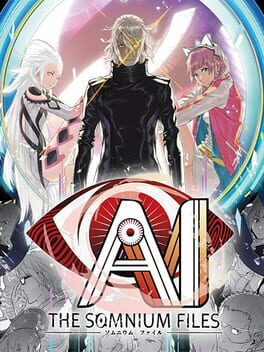
▲
1
▼
Two of the game's core themes are eyes and different types and expressions of love. This is reflected in the game's title, AI: the word itself is pronounced "eye", and is derived from "ai" (愛), the Japanese word for love. The title also has additional meanings, namely how it's pronounced similar to the English word "I", and how the title is short for "artificial intelligence". Additionally, the word "somnium" in the game's subtitle is taken from the Latin word for "dream", in reference to how the game's plot involves entering dreams in order to solve cases.
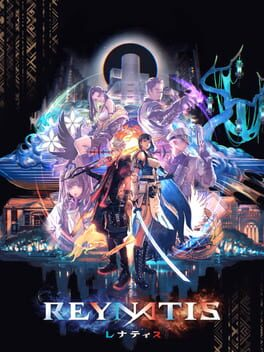
▲
1
▼
In an interview with the game's director Takumi Isobe published in Famitsu on February 22, 2024, Isobe explained that the game's title "Reynatis" holds deep significance to the game's story and is derived from two words. The first is "renatus", which means "birth" or "rebirth" in Latin. The second word is "rey" which means "king" in Spanish; additionally, "renatus" on its own can also refer to a "born king" in Spanish.
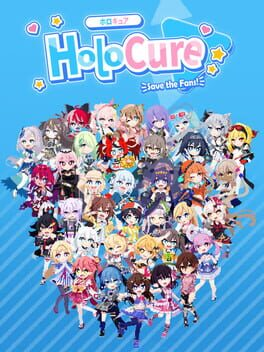
▲
1
▼
The "X-Potato" weapon is a reference to one of Inugami Korone's livestreams of Blasphemous, in which she accidentally mispronounces the name Exposito while looking up boss names up after beating the game. It is unlocked by surviving 10 minutes while playing as Korone in a run. Its available Collabs (fusions between two weapons) are also references to Korone:
• Rap Dog (combined with Idol Song): Alludes to Korone's ability to rap, most prominently shown off when she and Nekomata Okayu sang "if..." by DA PUMP.
• MiKorone (combined with Elite Lava Bucket): A portmanteau of Inugami Korone and Sakura Miko's names, a term for streams featuring the two collaborating together.
• I'm Die, Thank You Forever (combined with Holo Bomb): References a collaboration between her and Mori Calliope played Keep Talking And Nobody Explodes, each using their non-native language (English for Korone and Japanese for Calliope). During one attempt, Korone, realizing she couldn't diffuse the bomb in time, uttered "Ah, I'm die, thank you forever" before exploding.
• Rap Dog (combined with Idol Song): Alludes to Korone's ability to rap, most prominently shown off when she and Nekomata Okayu sang "if..." by DA PUMP.
• MiKorone (combined with Elite Lava Bucket): A portmanteau of Inugami Korone and Sakura Miko's names, a term for streams featuring the two collaborating together.
• I'm Die, Thank You Forever (combined with Holo Bomb): References a collaboration between her and Mori Calliope played Keep Talking And Nobody Explodes, each using their non-native language (English for Korone and Japanese for Calliope). During one attempt, Korone, realizing she couldn't diffuse the bomb in time, uttered "Ah, I'm die, thank you forever" before exploding.
Hololive Wiki Page on X-Potato:
https://holocure.fandom.com/wiki/X-Potato
Origin of the X-Potato meme:
https://youtu.be/5FIqKEHSzAY
Hololive Wiki Page on Rap Dog:
https://holocure.fandom.com/wiki/Rap_Dog
Korone Rapping:
https://youtu.be/eb76nfjSaXA
Hololive Wiki Page on MiKorone:
https://holocure.fandom.com/wiki/MiKorone
Hololive Wiki Page on I'm Die, Thank You Forever:
https://holocure.fandom.com/wiki/I%27m_Die,_Thank_You_Forever
Origin of the quote:
https://youtu.be/uLhNEN1ISRg?t=214
https://holocure.fandom.com/wiki/X-Potato
Origin of the X-Potato meme:
https://youtu.be/5FIqKEHSzAY
Hololive Wiki Page on Rap Dog:
https://holocure.fandom.com/wiki/Rap_Dog
Korone Rapping:
https://youtu.be/eb76nfjSaXA
Hololive Wiki Page on MiKorone:
https://holocure.fandom.com/wiki/MiKorone
Hololive Wiki Page on I'm Die, Thank You Forever:
https://holocure.fandom.com/wiki/I%27m_Die,_Thank_You_Forever
Origin of the quote:
https://youtu.be/uLhNEN1ISRg?t=214
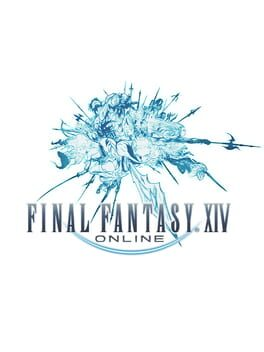
▲
1
▼
According to Final Fantasy XVI's creative director/scenario writer Kazutoyo Maehiro and the game's producer Naoki Yoshida in a 2023 IGN article, in the Japanese version of the game, Chocobos are referred to as "uma" (馬), which is the Japanese word for "horse". Initially, neither Maehiro or director Hiroshi Takai considered using Chocobos in the game at all, because according to Maehiro, "when thinking about the story, the worldview, and a feeling of reality, a horse just looked better as a silhouette when straddled." Yoshida elaborated that horses fit better when building a world based on European medieval gothic fantasy:
Despite this explanation, Yoshida still instructed the development team to include Chocobos in the game in an effort to stay faithful to the series' long-standing elements. The Japanese version also still refers to them as Chocobos and horses interchangeably. Maehiro stated that he tried to tie the Chocobos into the history of Valisthea through partnerships with its people, in an effort to create something culturally familiar. He justified this by stating that in Japanese, they "sometimes refer to a car as 'legs', or not having a car as 'having no legs'; and in the same way, the people of Valisthea refer to Chocobos as 'horses'." He subsequently implied that actual horses may exist in other regions in the game's world, but that in Valisthea, Chocobos function as their regional equivalent to actual horses. Localization director Michael-Christopher Koji Fox also stated that he decided not to refer to Chocobos as horses in the game's English translation:
The terminology in the decision to refer to Chocobos as horses resulted in confused or joking reactions from Japanese players online, since this is not the first time Chocobos were referred to as horses in the series. In the original 2010 release of Final Fantasy XIV Online, the kanji characters for horse and bird (鳥 , "tori") were used together as "horsebird" (馬鳥) in the Japanese script in place of the standard katakana for Chocobo (チョコボ). At release, several other katakana terms were replaced with kanji symbols, with some terms existing in-game as written in Chinese rather than Japanese. Square Enix offered several conflicting explanations for the changes, including the need to "build atmosphere", and to consolidate terminology with the then-upcoming Chinese-language release, but these did not help as the change caused an uproar among Japanese players, resulting in Chocobo being reincorporated into the Japanese version's script in a future update. The controversy would later be referenced in the 2013 reboot of Final Fantasy XIV Online through a piece of dialogue spoken by Golden Uma Doshin, a Quest NPC found in Central Shroud as part of the limited time quest "Turn Around, Beautiful":
"In reality, horses are animals that can build strong partnerships with humans. We share a long history with them. Weapons involving horses also appear more realistic. Especially with the improvement in graphics being so remarkable, there is a chance that it becomes difficult to lie or deceive viewers, in a good way, and as a result, may impair the sense of immersion. Chocobos are based on birds, which first of all means they don’t stand on four legs, and that makes them more difficult to mount. When compared with a horse it might not feel as stable to ride a Chocobo, and their wings aren’t big and strong enough to take you to the sky, either."
Despite this explanation, Yoshida still instructed the development team to include Chocobos in the game in an effort to stay faithful to the series' long-standing elements. The Japanese version also still refers to them as Chocobos and horses interchangeably. Maehiro stated that he tried to tie the Chocobos into the history of Valisthea through partnerships with its people, in an effort to create something culturally familiar. He justified this by stating that in Japanese, they "sometimes refer to a car as 'legs', or not having a car as 'having no legs'; and in the same way, the people of Valisthea refer to Chocobos as 'horses'." He subsequently implied that actual horses may exist in other regions in the game's world, but that in Valisthea, Chocobos function as their regional equivalent to actual horses. Localization director Michael-Christopher Koji Fox also stated that he decided not to refer to Chocobos as horses in the game's English translation:
"I remember seeing it in the script and remarking, 'You're saying 'horse' here. You're sure that's OK?' But Maehiro said, 'Yes, this is what we wanted to do.' In English, we never really wanted to use the word horse, because Chocobos and horses are entirely different. It just sounded weird to us in that sense. But we do use words like 'steed'; and I think 'courser' [a medieval word for a warhorse,] as well."
The terminology in the decision to refer to Chocobos as horses resulted in confused or joking reactions from Japanese players online, since this is not the first time Chocobos were referred to as horses in the series. In the original 2010 release of Final Fantasy XIV Online, the kanji characters for horse and bird (鳥 , "tori") were used together as "horsebird" (馬鳥) in the Japanese script in place of the standard katakana for Chocobo (チョコボ). At release, several other katakana terms were replaced with kanji symbols, with some terms existing in-game as written in Chinese rather than Japanese. Square Enix offered several conflicting explanations for the changes, including the need to "build atmosphere", and to consolidate terminology with the then-upcoming Chinese-language release, but these did not help as the change caused an uproar among Japanese players, resulting in Chocobo being reincorporated into the Japanese version's script in a future update. The controversy would later be referenced in the 2013 reboot of Final Fantasy XIV Online through a piece of dialogue spoken by Golden Uma Doshin, a Quest NPC found in Central Shroud as part of the limited time quest "Turn Around, Beautiful":
"Chocobo... chocobo... chocobo... Nothing but horsebirds in this stable. A sight to disturb Eastern eyes, to be sure."
IGN: Chocobos are Called 'Horses' in the Japanese Version of Final Fantasy XVI:
https://www.ign.com/articles/chocobos-are-called-horses-in-final-fantasy-xvi-japanese-version
Censored Gaming: In The Japanese Version Of Final Fantasy XVI, Chocobos Are Called "Horses":
https://www.youtube.com/watch?v=7AT-QpAwkqQ
Destructoid: Final Fantasy XIV text issue turns Chocobos to Horsebirds:
https://www.destructoid.com/final-fantasy-xiv-text-issue-turns-chocobos-to-horsebirds/
Final Fantasy XIV Online wiki articles:
https://ffxiv.consolegameswiki.com/wiki/Golden_Uma_Doshin
https://ffxiv.consolegameswiki.com/wiki/Turn_Around,_Beautiful
https://www.ign.com/articles/chocobos-are-called-horses-in-final-fantasy-xvi-japanese-version
Censored Gaming: In The Japanese Version Of Final Fantasy XVI, Chocobos Are Called "Horses":
https://www.youtube.com/watch?v=7AT-QpAwkqQ
Destructoid: Final Fantasy XIV text issue turns Chocobos to Horsebirds:
https://www.destructoid.com/final-fantasy-xiv-text-issue-turns-chocobos-to-horsebirds/
Final Fantasy XIV Online wiki articles:
https://ffxiv.consolegameswiki.com/wiki/Golden_Uma_Doshin
https://ffxiv.consolegameswiki.com/wiki/Turn_Around,_Beautiful

subdirectory_arrow_right DK: King of Swing (Game)
▲
1
▼
 Donkey Kong 64 features a unnamed bat enemy found within certain stages such as Fungi Forest, Creepy Castle and Crystal Caves. This enemy would reappear in future games such as DK: King of Swing but under a seemingly new name: Flipflap.
Donkey Kong 64 features a unnamed bat enemy found within certain stages such as Fungi Forest, Creepy Castle and Crystal Caves. This enemy would reappear in future games such as DK: King of Swing but under a seemingly new name: Flipflap. It turns out that this particular name was already used for this enemy back in the Japanese localization of Donkey Kong 64. In the bestiary within the official Japanese DK64 guidebook, they are named フリップフラップ (Furippufurappu), which of course translates to Flipflap in English.
Scan from Japanese DK64 guidebook:
https://www.mariowiki.com/images/4/4a/DK64_Shogakukan_P13.jpg
Japanese DK King of Swing website:
https://www.nintendo.co.jp/n08/bbkj/story/index.html
English DK King of Swing manual:
https://www.thegameisafootarcade.com/wp-content/uploads/2017/08/DK-King-of-Swing-Game-Manual.pdf
https://www.mariowiki.com/images/4/4a/DK64_Shogakukan_P13.jpg
Japanese DK King of Swing website:
https://www.nintendo.co.jp/n08/bbkj/story/index.html
English DK King of Swing manual:
https://www.thegameisafootarcade.com/wp-content/uploads/2017/08/DK-King-of-Swing-Game-Manual.pdf

This trivia has been marked as "Not Safe for Work".
It may not be appropriate for all visitors and definitely isn't appropriate for work or school environments.
Click here to unhide it.
It may not be appropriate for all visitors and definitely isn't appropriate for work or school environments.
Click here to unhide it.
▲
1
▼
Official Japanese Nintendo website page for Banjo-Kazooie controls:
https://www.nintendo.co.jp/n01/n64/software/nus_p_nbkj/action/page03.html
The Cutting Room Floor article:
https://tcrf.net/Banjo-Kazooie#Animation_Filenames
https://www.nintendo.co.jp/n01/n64/software/nus_p_nbkj/action/page03.html
The Cutting Room Floor article:
https://tcrf.net/Banjo-Kazooie#Animation_Filenames
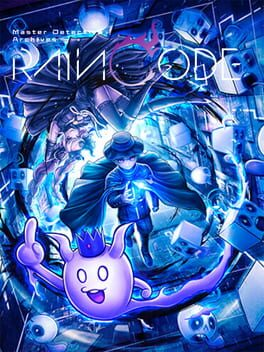
▲
1
▼
When creating Kanai Ward, Kazutaka Kodaka originally considered giving it an original language, but dropped the idea when he realized it would be too "fantastical". Instead, he incorporated multiple languages (such as Russian, Hindi, Japanese and English, as well as other multi-nationalistic elements) on the signboards around town. This inspired him to make the various character names multinational as well, assigning names in a way that the characters would fit them. At the same time, however, Kodaka avoided using typical names for the cast, instead opting for more unusual names such as "Hellsmile" and "Nightmare": words that are commonly heard, but not as names given to somebody. He specifically went for names that were unique but easy to remember.
In regards to the character Makoto Kagutsuchi, who has a normal sounding name despite his unique design, Kodaka stated:
In regards to the character Makoto Kagutsuchi, who has a normal sounding name despite his unique design, Kodaka stated:
"Kagutsuchi and the Amaterasu Corporation's names are gods' names from Japanese mythology. I looked it up and found Kagutsuchi is the "fire god". Kagutsuchi and Amaterasu are names regular Japanese people won't have. The way you may feel strange about the names such as Hellsmile and Nightmare, I think Japanese players may also feel uncomfortable hearing names like Amaterasu and Kagutsuchi."

subdirectory_arrow_right Star Fox 64 3D (Game)
▲
1
▼
 Many Star Fox 64 players have referred to the Venom army general piloting the mecha boss encountered in the Easy Route Corneria path as "Granga", presumably because of the Star Fox 64 Nintendo Power Official Strategy Guide referring to him as such.
Many Star Fox 64 players have referred to the Venom army general piloting the mecha boss encountered in the Easy Route Corneria path as "Granga", presumably because of the Star Fox 64 Nintendo Power Official Strategy Guide referring to him as such.In reality, or at least going by the official Japanese Star Fox 64 guidebook and also Star Fox 64 3D, the name "Granga" actually refers to the aforementioned mecha itself. Like most of Andross' lieutenants (with the exception of Caiman), the pilot himself seemingly never had a proper name.
Star Fox 64 Nintendo Power Official Strategy Guide referring to the pilot of Granga as "Granga" himself:
https://archive.org/details/Starfox64NintendoPowerOfficialStrategyGuide/page/n33/mode/2up
User's English translation of official Japanese Star Fox 64 guidebook:
https://www.reddit.com/r/starfox/comments/y8cwc9/finally_got_around_to_doing_translations/
Encountering Granga, dubbed as "Urban-Assault Weapon", in Star Fox 64 3D:
https://youtu.be/Dz5Sni0j0tw?t=239
https://archive.org/details/Starfox64NintendoPowerOfficialStrategyGuide/page/n33/mode/2up
User's English translation of official Japanese Star Fox 64 guidebook:
https://www.reddit.com/r/starfox/comments/y8cwc9/finally_got_around_to_doing_translations/
Encountering Granga, dubbed as "Urban-Assault Weapon", in Star Fox 64 3D:
https://youtu.be/Dz5Sni0j0tw?t=239

▲
5
▼
 The translation group RPGe's 1998 English translation of Final Fantasy V is considered to be one of the most widely-played and influential fan translations in video game history. It gained this reputation because it released before Squaresoft's first official translation in Final Fantasy Anthology in late 1999, and despite RPGe primarily consisting of inexperienced teenagers, it was regarded as a better translation than the official one, leading many Western players to first experience the game through it.
The translation group RPGe's 1998 English translation of Final Fantasy V is considered to be one of the most widely-played and influential fan translations in video game history. It gained this reputation because it released before Squaresoft's first official translation in Final Fantasy Anthology in late 1999, and despite RPGe primarily consisting of inexperienced teenagers, it was regarded as a better translation than the official one, leading many Western players to first experience the game through it.The first translation attempts stemmed from widespread confusion over Squaresoft not releasing three FF games in the West: Final Fantasy II, Final Fantasy III, and FFV. Their decision to release Final Fantasy VII internationally under its original numbering after Final Fantasy VI was released in the West a few years earlier as the "third" game in the series also contributed to this.
The co-creator of RPGe, named Shadow, was inspired by an incomplete FFII translation by users Demi and Som2freak (the latter having later lent Shadow tools to work on FFV), and started translating FFV by making flashcards for which hex code corresponded to each Japanese and English character in the game's data. He promoted his efforts online using photoshopped FFV images and recruited other users to create RPGe, including translator David Timko, and a computer engineering major named Hooie who also asked Japanese instructors at his university to help translate some enemy names. RPGe's plan was to directly edit their English script into the text files of a ROM of the Japanese version, but their work was slow and tedious due to them having little experience with fan translations and being out of touch with fledgling emulation communities. This lead to technical issues with their text and sprite editing software, and English characters being poorly displayed under conditions that were originally designed for larger Japanese characters. The group also suffered from internal factionalism, and since Shadow promoted himself as the public face of the project, he found that he could not handle the attention and controversy that came from how seriously he took the project and RPGe itself, seeing the translation effort as a vital service to the Squaresoft fan community. After Demi published a lengthy post parodying Shadow, he "snapped" and left RPGe. The co-founders of RPGe would also eventually step down, but other users would take over and start their own work.
A user named Myria, who had argued against RPGe's hex editing approach to no avail, split off from their efforts beforehand to work on a separate translation. Sharing similar setbacks to them, she gradually parsed through the code used to handle the text files, and edited it so it could recognize English characters of different sizes and fit more in a dialogue box. Som2freak helped translate the script for a time, but then left the project after bringing on a new editor, named harmony7, who started heavily revising Som2freak's translations to his chagrin despite seeing several issues with it.
One of the most controversial aspects of the translation was the main character's name. Squaresoft's later English translation named him "Bartz", but RPGe's translation named him "Butz", which many joked sounds like "butts". Myria claimed that Butz was the most accurate translation based on documents and official merchandise using it "the way we'd written it" (for reference, the Romanized version of the Japanese name "バッツ" comes out as "Battsu"). However, Butz is used in real life as an actual German surname with a different pronunciation, the vowel being an "oe" sound like in the English words "put" and "good". Therefore, Bartz would make more sense to match up with the vowels in the Japanese name than Butz, and also fits better as a German first name since Bartz is a pet name for Bartholomäus (Bartholomew).
The bulk of Myria's technical work ended in October 1997, with harmony7 still working to revise the entire script until something unexpected happened. An early version of the fan translation mysteriously appeared on a Geocities website with others taking credit for it. This prompted RPGe to release their work up to that point as "v0.96" on October 17, 1997, with the final patch eventually being released in June 1998. The translation patch received acclaim for its technical aspects and near-professional writing quality, and influenced other players to become translators, including Clyde Mandelin who would later create the English fan translation of Mother 3. Squaresoft never contacted RPGe about the translation, and while their 1999 localization of the game was seen as inferior to RPGe's, Myria would later opine that Square Enix's 2006 localization in Final Fantasy V: Advance was better than theirs. Myria continued hacking and reverse-engineering games and eventually earned a job at an undisclosed major video game company.
2017 Kotaku article:
https://web.archive.org/web/20170428183534/https://kotaku.com/how-three-kids-beat-the-odds-and-translated-final-fanta-1794628286
2021 IGN article:
https://web.archive.org/web/20210508152802/https://www.ign.com/articles/the-untold-drama-and-history-behind-final-fantasy-5s-fan-translation
Butz surname pronunciation:
https://en.wiktionary.org/wiki/Butz#Pronunciation_2
Bartz pet name source from Ancestry.com:
https://www.ancestry.com/name-origin?surname=bartz
Final Fantasy Chrome Figure Collection wiki articles:
https://finalfantasy.fandom.com/wiki/Final_Fantasy_Chrome_Figure_Collection
https://ffmerchandise.fandom.com/wiki/Final_Fantasy_Chrome_Figures_Collection
Ebay listing for Final Fantasy Chrome Figure set including Butz:
https://www.ebay.com/itm/275540207811
https://web.archive.org/web/20170428183534/https://kotaku.com/how-three-kids-beat-the-odds-and-translated-final-fanta-1794628286
2021 IGN article:
https://web.archive.org/web/20210508152802/https://www.ign.com/articles/the-untold-drama-and-history-behind-final-fantasy-5s-fan-translation
Butz surname pronunciation:
https://en.wiktionary.org/wiki/Butz#Pronunciation_2
Bartz pet name source from Ancestry.com:
https://www.ancestry.com/name-origin?surname=bartz
Final Fantasy Chrome Figure Collection wiki articles:
https://finalfantasy.fandom.com/wiki/Final_Fantasy_Chrome_Figure_Collection
https://ffmerchandise.fandom.com/wiki/Final_Fantasy_Chrome_Figures_Collection
Ebay listing for Final Fantasy Chrome Figure set including Butz:
https://www.ebay.com/itm/275540207811

▲
3
▼
The character Ultros from Final Fantasy VI’s Japanese name is pronounced as “ortorosu” and was intended to be a reference to Orthos from Greek mythology. When the game was localized, the translator was presumably unaware of this reference and transliterated it as Ultros. Later entries in the series would alternate between calling the character Ultros and Orthos.

subdirectory_arrow_right The Legend of Zelda: A Link to the Past & Four Swords (Game), The Legend of Zelda: The Wind Waker (Game), The Legend of Zelda: Twilight Princess (Game), The Legend of Zelda: Twilight Princess (Game), The Legend of Zelda (Franchise)
▲
2
▼
The Master Sword was named after King Arthur's legendary sword "Excalibur" in the French version of The Legend of Zelda: A Link to the Past. The name Excalibur would also be used in the French versions of The Legend of Zelda: The Wind Waker and The Legend of Zelda: Twilight Princess.
The Legend of Zelda: A Link to the Past - "Excalibur retrouvera, préservant la pureté de la lignée des Chevaliers.":
https://www.youtube.com/watch?v=5saXnUkPzMY
The Legend of Zelda: The Wind Waker - "Vous obtenez Excalibur! Excalibur est l'Epée Légendaire du Héros du Temps, qui a le pouvoir de repousser le mal.":
https://www.youtube.com/watch?v=qI2ArNpV6Ag#t=2146
The Legend of Zelda: Twilight Princess - "En cet endroit secret repose Excalibur, l'épée pourfendeuse du mal forgée par les sages des temps anciens.":
https://www.youtube.com/watch?v=dgXIupUStTo#t=1483
https://www.youtube.com/watch?v=5saXnUkPzMY
The Legend of Zelda: The Wind Waker - "Vous obtenez Excalibur! Excalibur est l'Epée Légendaire du Héros du Temps, qui a le pouvoir de repousser le mal.":
https://www.youtube.com/watch?v=qI2ArNpV6Ag#t=2146
The Legend of Zelda: Twilight Princess - "En cet endroit secret repose Excalibur, l'épée pourfendeuse du mal forgée par les sages des temps anciens.":
https://www.youtube.com/watch?v=dgXIupUStTo#t=1483
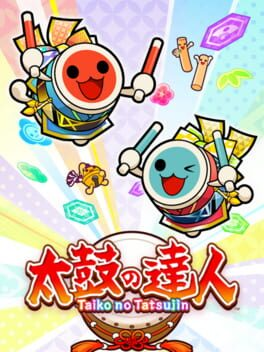
▲
2
▼
On April Fools Day, 2021, Taiko no Tatsujin's Twitter Account posted a QR Code, along with a foreboding conversation between Don-Chan and Ka-Chan. By scanning this QR Code on a compatible Arcade Cabinet, the unique song "彁" (pronounced "Ka") by composer LeaF is unlocked. A harder Hidden Oni difficulty was distributed via QR Code the next year on the same day. The song is notable for a few reasons:
• "彁" is currently the only song in the game that is unlocked through scanning a QR Code; all other Codes provide cosmetic options for Don-Chan. Likewise, the song is added to a genre folder separate from the rest of the game's music, labeled as "Hidden Data", with the subtitle translating to "That's No Good".
• The name of the song technically does not exist. "彁" is a "Ghost Character", a character that exists in Unicode, but does not anywhere else. While other Ghost Characters have some sort of explanation for their existence, "彁" has no definitive source. Its pronounciation of "Ka" was provided by LeaF herself, as the character otherwise has none.
• Upon selecting the song's Hidden Oni chart, a unique transition effect plays with glitchy effects. No other song in the game has a unique animation for going from Oni to Hidden Oni difficulty.
• The Hidden Oni Chart is considered one of the hardest songs in the series. This is attributed to a heavy utilization of multiple scrolling speeds and polyrhythmic patterns. Only one individual is known to have full comboed it when it first debuted.
• "彁" is currently the only song in the game that is unlocked through scanning a QR Code; all other Codes provide cosmetic options for Don-Chan. Likewise, the song is added to a genre folder separate from the rest of the game's music, labeled as "Hidden Data", with the subtitle translating to "That's No Good".
• The name of the song technically does not exist. "彁" is a "Ghost Character", a character that exists in Unicode, but does not anywhere else. While other Ghost Characters have some sort of explanation for their existence, "彁" has no definitive source. Its pronounciation of "Ka" was provided by LeaF herself, as the character otherwise has none.
• Upon selecting the song's Hidden Oni chart, a unique transition effect plays with glitchy effects. No other song in the game has a unique animation for going from Oni to Hidden Oni difficulty.
• The Hidden Oni Chart is considered one of the hardest songs in the series. This is attributed to a heavy utilization of multiple scrolling speeds and polyrhythmic patterns. Only one individual is known to have full comboed it when it first debuted.
YouTube video explaining the song:
https://www.youtube.com/watch?v=Ky73qsfqYes
Article on April Fools 2021:
https://taikotime.blogspot.com/2021/04/acn-quality-romp-down-april-rabbit-hole.html
Article on April Fools 2022:
https://taikotime.blogspot.com/2022/04/taiko-no-tatsujin-fools-in-april-2022.html
https://www.youtube.com/watch?v=Ky73qsfqYes
Article on April Fools 2021:
https://taikotime.blogspot.com/2021/04/acn-quality-romp-down-april-rabbit-hole.html
Article on April Fools 2022:
https://taikotime.blogspot.com/2022/04/taiko-no-tatsujin-fools-in-april-2022.html

subdirectory_arrow_right Dinosaur Planet (Game)
▲
1
▼
 Star Fox Adventures contains a peculiar character named the WarpStone, a living stone creature that has the ability to warp users to the top of Ice Mountain and also Krazoa Palace, where Fox will need to deposit all of the six Krazoa Spirits he acquired through partaking through the Krazoa's trials in order to save Krystal, who is imprisoned at the top of the Palace. Underneath the WarpStone also lays the Game Well Maze, where Fox can deposit any of the Cheat Tokens he's collected from Scarab Wells hidden in the map throughout his Adventures to unlock extra features and also cryptic messages.
Star Fox Adventures contains a peculiar character named the WarpStone, a living stone creature that has the ability to warp users to the top of Ice Mountain and also Krazoa Palace, where Fox will need to deposit all of the six Krazoa Spirits he acquired through partaking through the Krazoa's trials in order to save Krystal, who is imprisoned at the top of the Palace. Underneath the WarpStone also lays the Game Well Maze, where Fox can deposit any of the Cheat Tokens he's collected from Scarab Wells hidden in the map throughout his Adventures to unlock extra features and also cryptic messages. In Dinosaur Planet, the WarpStone was originally meant to be two different characters, the SwapStone twins known as Rocky and Rubble. Hence their name, their original purpose was to let the player be able to switch back and forth between Sabre and Krystal's adventures. Sabre would utilize Rocky in an area called SwapStone Hollow, while Krystal would utilize Rubble in her equivalent, SwapStone Circle (which is also where the LightFoot Village was situated). Both characters would also retain the ability to warp their respective character to Warlock Mountain (the predecessor to SFA's Krazoa Palace) where the characters could similarly deposit the Krazoa spirits they acquired from the Krazoa shrines. Underneath the SwapStones was the only in-game store where Sabre and Krystal could purchase items, maps, etc. Curiously, their bio claims that they were created during the age of the Krazoa, by being mined from the magic rock of Warlock Mountain, and that they assisted in the creation of the Force Point Temples and the Krazoa shrines.
As Krystal's playable co-protagonist role was scrapped in SFA outside of the prologue, the SwapStones were merged into one character, the WarpStone, and SwapStone Hollow was renamed to ThornTail Hollow. SwapStone Circle would be effectively removed, but the LightFoot Village segment was heavily expanded into its own distinct area. In place of being able to swap to Krystal, Fox could be teleported back to the top of Ice Mountain where he could replay the jet bike race against the SharpClaw. While early design documents and leftover data from the E3 2002 kiosk build of SFA indicate that the store was still planned to be located underneath the WarpStone, in the final game it was relocated to the middle of ThornTail Hollow as its own distinct establishment, the ThornTail Store, and the alformentioned Game Well Maze took its original intended spot.
Diving in to the game files, it seems Rare had also intended on letting the WarpStone teleport Fox over to additional areas such as Cape Claw, Moon Mountain Pass, and the Force Point Temples, but this was scrapped and currently, the WarpStone can only warp you to Ice Mountain and Krazoa Palace.
Dinosaur Planet condensed story:
https://rarethief.com/dinosaur-planet/
Dinosaur Planet Rubble scene:
https://www.youtube.com/watch?v=qc6zy7VQaTA?list=PL4DL2YQ4hzDUJ2MjfUXapxnuYDJeHsRcA&t=15
Dinosaur Planet Rocky scene:
https://www.youtube.com/watch?v=qc6zy7VQaTA?list=PL4DL2YQ4hzDUJ2MjfUXapxnuYDJeHsRcA&t=1242
Earlier SFA cutscene sequence list from Kev Bayliss' twitter:
https://twitter.com/Kev_Bayliss/status/1651842011492646913
Star Fox Adventures WarpStone scene:
https://www.youtube.com/watch?v=f9M9-sPHACA?t=308
The Cutting Room Floor articles:
https://tcrf.net/Proto:Star_Fox_Adventures/E3_2002_Demo
https://tcrf.net/Star_Fox_Adventures#Extra_WarpStone_Destinations
https://rarethief.com/dinosaur-planet/
Dinosaur Planet Rubble scene:
https://www.youtube.com/watch?v=qc6zy7VQaTA?list=PL4DL2YQ4hzDUJ2MjfUXapxnuYDJeHsRcA&t=15
Dinosaur Planet Rocky scene:
https://www.youtube.com/watch?v=qc6zy7VQaTA?list=PL4DL2YQ4hzDUJ2MjfUXapxnuYDJeHsRcA&t=1242
Earlier SFA cutscene sequence list from Kev Bayliss' twitter:
https://twitter.com/Kev_Bayliss/status/1651842011492646913
Star Fox Adventures WarpStone scene:
https://www.youtube.com/watch?v=f9M9-sPHACA?t=308
The Cutting Room Floor articles:
https://tcrf.net/Proto:Star_Fox_Adventures/E3_2002_Demo
https://tcrf.net/Star_Fox_Adventures#Extra_WarpStone_Destinations
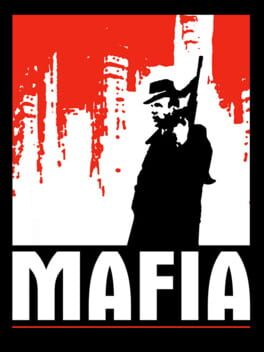
▲
1
▼
Despite Mafia taking place from 1930 to 1938, Molotov cocktails appear as a useable item and are specifically called Molotov cocktails, despite that name first being coined afterwards in 1939 by Finns fighting against the Soviet Union during the Russo-Finnish Winter War.
Finnish article on surviving unused Molotov cocktails from the Winter War:
https://web.archive.org/web/20230324192849/https://www.is.fi/kotimaa/art-2000001159984.html
Swedish newspaper listings on the use of the name Molotov cocktail in 1940:
https://tidningar.kb.se/?q=Molotov%20cocktail&sort=&from=1940-01-01&to=1940-12-31
https://tidningar.kb.se/?q=Molotovcocktail&sort=&from=1940-01-01&to=1940-12-31
https://web.archive.org/web/20230324192849/https://www.is.fi/kotimaa/art-2000001159984.html
Swedish newspaper listings on the use of the name Molotov cocktail in 1940:
https://tidningar.kb.se/?q=Molotov%20cocktail&sort=&from=1940-01-01&to=1940-12-31
https://tidningar.kb.se/?q=Molotovcocktail&sort=&from=1940-01-01&to=1940-12-31

▲
1
▼
 The WarpStone, despite living on a planet filled with dinosaurs, is infamously somehow incapable of warping them, hence why Tricky can't accompany Fox to Krazoa Palace.
The WarpStone, despite living on a planet filled with dinosaurs, is infamously somehow incapable of warping them, hence why Tricky can't accompany Fox to Krazoa Palace.In the Japanese version of Star Fox Adventures, the WarpStone, whose Japanese name is ワープ魔人 (Wāpu majin) or Warp Demon, offers a different explanation of why he can't warp Tricky through Japanese subtitles:
すまない 、1つ言い忘れたことがある。恐竜たちはワープをこわがるんだ! (Sorry, I forgot to mention one thing. Dinosaurs are afraid of teleporting!)
Essentially, it's not that the WarpStone can't teleport dinosaurs like Tricky, it's just that they're merely afraid of being warped.
Star Fox Adventures (JP) - WarpStone explanation:
https://youtu.be/wmlb1ql3NxI?list=PLNQca9Z15B3Cwq7rwz2GeE0Bkvcu546e8&t=177
SFA 4koma manga:
https://drive.google.com/drive/folders/1DwuiJ2CZ7RNKd5Do-FLTE7cV5XoMvo0d
https://youtu.be/wmlb1ql3NxI?list=PLNQca9Z15B3Cwq7rwz2GeE0Bkvcu546e8&t=177
SFA 4koma manga:
https://drive.google.com/drive/folders/1DwuiJ2CZ7RNKd5Do-FLTE7cV5XoMvo0d
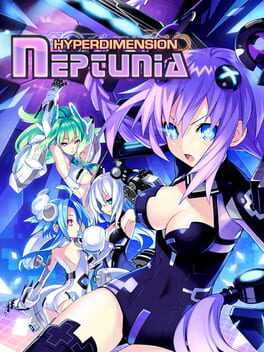
subdirectory_arrow_right Hyperdimension Neptunia (Franchise)
▲
1
▼
The Four CPU goddesses, and the lands they hail from in Gamindustri, are designed and named after consoles from the video game industry:
Neptune (Purple Heart) / Planeptune - The unreleased Sega Neptune. A two-in-one Sega Mega Drive and Sega 32X hybrid.
Noire (Black Heart) / Lastation - Sony's PlayStation 3. Her name is French for the color black.
Vert (Green Heart) / Leanbox - Microsoft's Xbox 360. Her name is French for the color green.
Blanc (White Heart) / Lowee - Nintendo Wii. Her name is French for the color white.
Neptune (Purple Heart) / Planeptune - The unreleased Sega Neptune. A two-in-one Sega Mega Drive and Sega 32X hybrid.
Noire (Black Heart) / Lastation - Sony's PlayStation 3. Her name is French for the color black.
Vert (Green Heart) / Leanbox - Microsoft's Xbox 360. Her name is French for the color green.
Blanc (White Heart) / Lowee - Nintendo Wii. Her name is French for the color white.
Mizuno Naoko interview confirming the console war inspiration and Neptune being based on the Sega Neptune:
https://kotaku.com/hyperdimension-neptunias-creator-dreams-of-a-fighting-g-5947178
General facts article detailing other references:
https://www.thegamer.com/hyperdimension-neptunia-facts/
https://kotaku.com/hyperdimension-neptunias-creator-dreams-of-a-fighting-g-5947178
General facts article detailing other references:
https://www.thegamer.com/hyperdimension-neptunia-facts/
Franchise: PaRappa the Rapper
▲
1
▼
It has been claimed in interviews that the name "PaRappa" is a pun on "parappa", a supposed Japanese word meaning "flat" or "paper-thin", and the English word "rapper". This appears to be a slight mistranslation, as the word "parappa" does not exist within Japanese, but the word "パラパラ" (para para) seems to be a more likely origin, a Japanese term for flipping through a book, which would have flat pages. The term is also used for a Japanese form of disco dancing, which could also be seen as part of a pun, given that the series takes influence from a lot of different genres as opposed to just rap, with PaRappa the Rapper 2 having a noticeable disco influence.
Example of a press release where PaRappa is said to mean "paper thin":
https://www.nytimes.com/1998/03/12/technology/game-theory-the-japanese-embrace-hip-hop-and-parappa-is-born.html
Para Para definition 1: disco:
https://jisho.org/word/%E3%83%91%E3%83%A9%E3%83%91%E3%83%A9-1
Para Para definition 2: flipping:
https://jisho.org/word/%E3%83%91%E3%83%A9%E3%83%91%E3%83%A9
https://www.nytimes.com/1998/03/12/technology/game-theory-the-japanese-embrace-hip-hop-and-parappa-is-born.html
Para Para definition 1: disco:
https://jisho.org/word/%E3%83%91%E3%83%A9%E3%83%91%E3%83%A9-1
Para Para definition 2: flipping:
https://jisho.org/word/%E3%83%91%E3%83%A9%E3%83%91%E3%83%A9
Collection: Bubsy
▲
2
▼
The name "Bubsy" originated from series creator Michael Berlyn's brother-in-law, who would refer to "rounded, bouncy, happy things" such as Volkswagen Beetles with the nonsense adjective "bubsy".
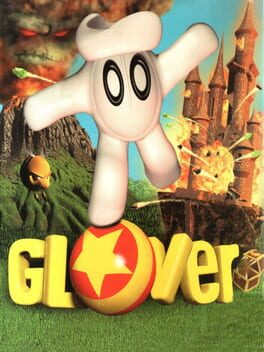
subdirectory_arrow_right Blitz Games Studios (Company)
▲
1
▼
The Garib collectibles in Glover originated as an in-joke, according to designer Rich Albon:
"The studio was doing a port for a Japanese company at around the time of Glover and they got a faxed bug report (yes, a faxed bug report!) which had one item that read, There is a problem with the Garib.' No one knew what a Garib was - there was no reference to it in the in game or in the code. So it kind of became an office meme: anything without a name became a Garib."
"The Making of Glover" article from Retro Gamer (UK) No. 234, June 2022. Can be found on multiple legitimate subscription sites, such as Everand:
https://www.everand.com/article/577759444/The-Making-Of-Glover
https://www.everand.com/article/577759444/The-Making-Of-Glover

subdirectory_arrow_right Star Fox: Assault (Game)
▲
1
▼
 Star Fox: Assault introduces a new team member for Star Wolf, Panther Caroso, who fills in the space left behind by the departures of Andrew Oikonny and Pigma Dengar. He reappears in its sequel, Star Fox Command, but with a slightly different name: Panther Caruso.
Star Fox: Assault introduces a new team member for Star Wolf, Panther Caroso, who fills in the space left behind by the departures of Andrew Oikonny and Pigma Dengar. He reappears in its sequel, Star Fox Command, but with a slightly different name: Panther Caruso. Both of these are actually mistranslations of his intended surname in Japan, which is カルロッソ (Karurosso), or Caluroso. "Caluroso" is the Spanish word for warm, hot, energetic, enthusiastic, etc., which is in line with his womanizer, Latin, and Giacomo Casanova-esque personality and archetype.
User's English translation of official Japanese Star Fox: Assault guidebook:
https://www.reddit.com/r/starfox/comments/10m82rq/for_all_you_star_fox_assault_fans_some_pictures/
User's English translation of official Japanese Star Fox Command guidebook:
https://www.reddit.com/r/starfox/comments/ysr1ip/behold_translations_of_characters_stages_bosses/
https://www.reddit.com/r/starfox/comments/10m82rq/for_all_you_star_fox_assault_fans_some_pictures/
User's English translation of official Japanese Star Fox Command guidebook:
https://www.reddit.com/r/starfox/comments/ysr1ip/behold_translations_of_characters_stages_bosses/
| keyboard_double_arrow_leftFirst keyboard_arrow_leftPrev | Page 1 of 3 | Nextkeyboard_arrow_right Lastkeyboard_double_arrow_right |
